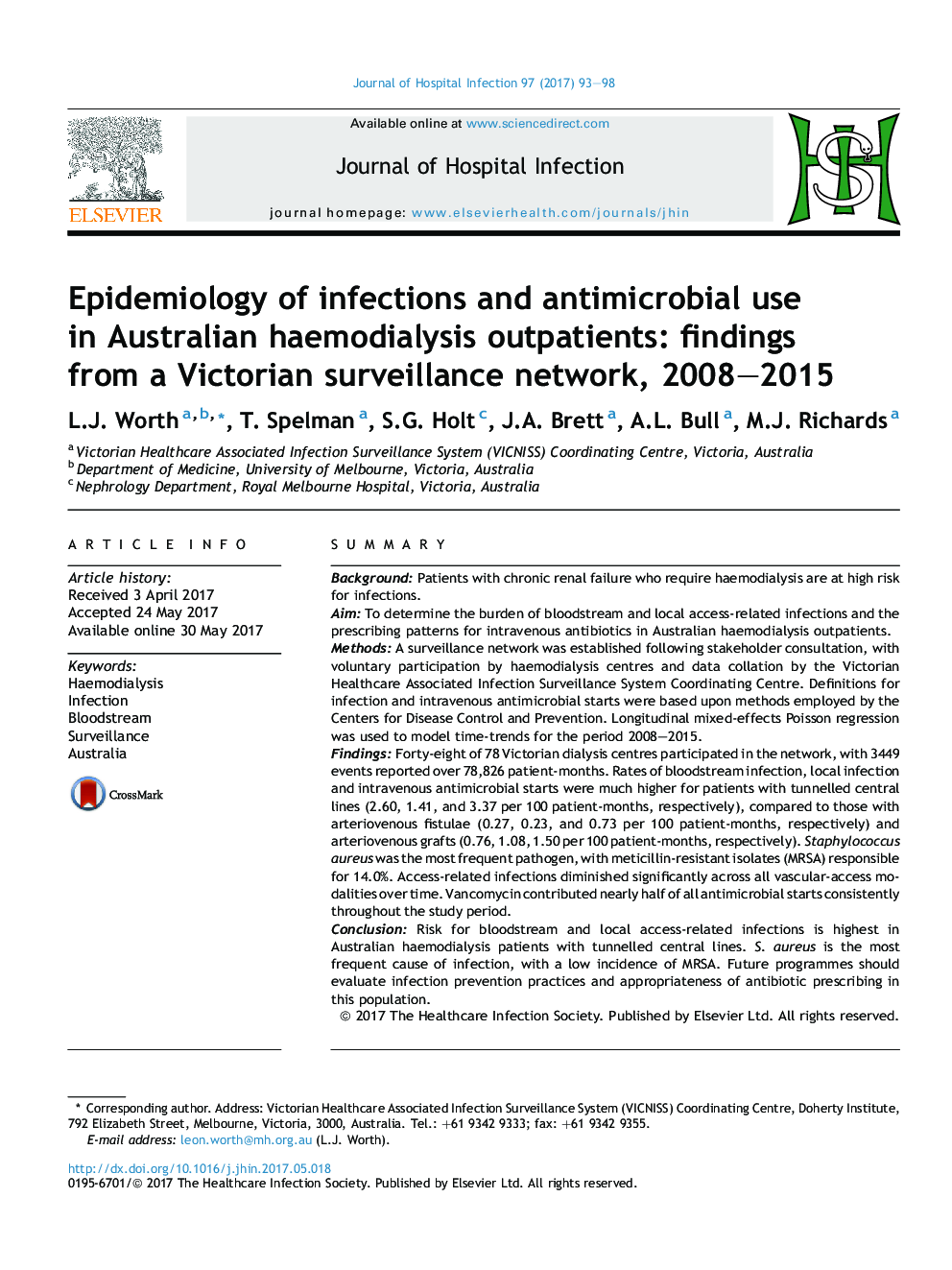| Article ID | Journal | Published Year | Pages | File Type |
|---|---|---|---|---|
| 5668377 | Journal of Hospital Infection | 2017 | 6 Pages |
SummaryBackgroundPatients with chronic renal failure who require haemodialysis are at high risk for infections.AimTo determine the burden of bloodstream and local access-related infections and the prescribing patterns for intravenous antibiotics in Australian haemodialysis outpatients.MethodsA surveillance network was established following stakeholder consultation, with voluntary participation by haemodialysis centres and data collation by the Victorian Healthcare Associated Infection Surveillance System Coordinating Centre. Definitions for infection and intravenous antimicrobial starts were based upon methods employed by the Centers for Disease Control and Prevention. Longitudinal mixed-effects Poisson regression was used to model time-trends for the period 2008-2015.FindingsForty-eight of 78 Victorian dialysis centres participated in the network, with 3449 events reported over 78,826 patient-months. Rates of bloodstream infection, local infection and intravenous antimicrobial starts were much higher for patients with tunnelled central lines (2.60, 1.41, and 3.37 per 100 patient-months, respectively), compared to those with arteriovenous fistulae (0.27, 0.23, and 0.73 per 100 patient-months, respectively) and arteriovenous grafts (0.76, 1.08, 1.50 per 100 patient-months, respectively). Staphylococcus aureus was the most frequent pathogen, with meticillin-resistant isolates (MRSA) responsible for 14.0%. Access-related infections diminished significantly across all vascular-access modalities over time. Vancomycin contributed nearly half of all antimicrobial starts consistently throughout the study period.ConclusionRisk for bloodstream and local access-related infections is highest in Australian haemodialysis patients with tunnelled central lines. S. aureus is the most frequent cause of infection, with a low incidence of MRSA. Future programmes should evaluate infection prevention practices and appropriateness of antibiotic prescribing in this population.
